We got a tip via Facebook that Setenil is worth seeing. I know that many people, especially younger ones, ridicule Facebook as antiquated, but I often generate valuable information from Facebook that I simply don't get from Instagram. According to Googlemaps, Setenil de la Bodegas, as it is correctly called, is located 30 minutes north of Ronda on the Ruta de Pueblos Blancos, the road of the white villages. A look at google reveals Setenil as a rock village. As this sounds exciting and we are close to Ronda, we spontaneously decide to set off.
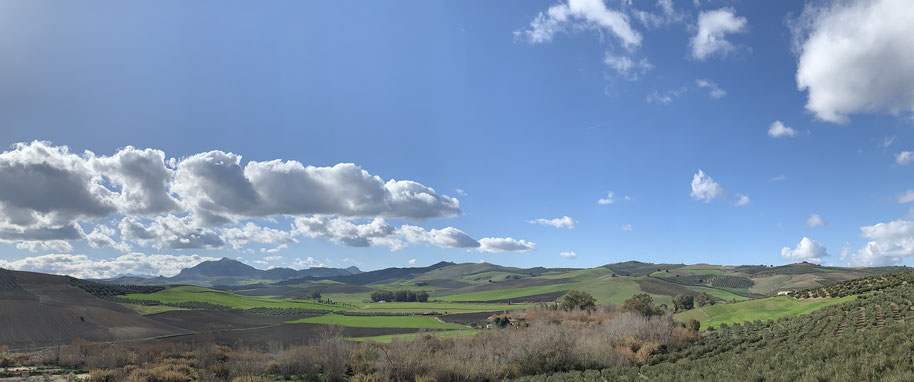
From a distance, Setenil looks like all the white villages in Andalusia. A sea of white houses on a mountainside. At the foot of the village, a P sign points the way to a parking lot. We follow the sign for the main road, on and on. Cars are parked along the road to the right and left, some of them at an adventurous angle over a drainage ditch. We continue to follow the P sign to the center of the village at the top of the hill and further and further down the hill again. We trust the sign and continue out of the village and once around the village. The parking lot is finally on the other side. But no, it is a parking garage for € 1.50 / h, but unfortunately only 2.05 m high, and we are higher with our bikes. So we go back and park on the road. We then walk up the hill towards the old town.
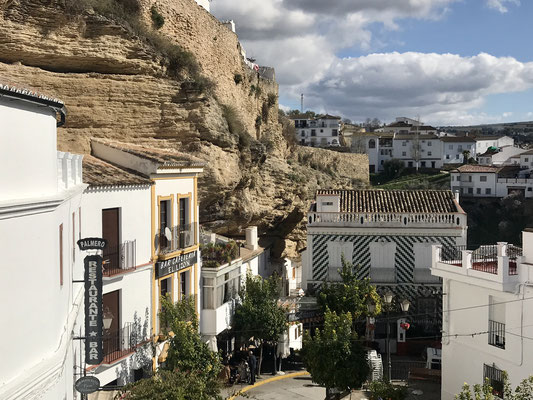
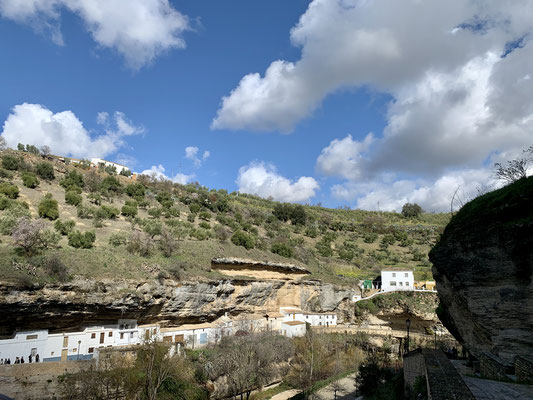
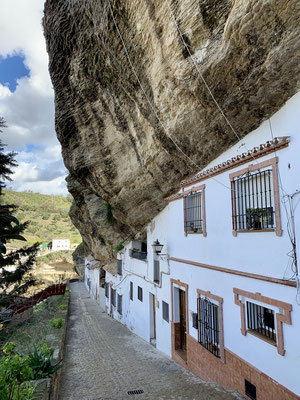
And we are not disappointed.
There was already a medieval fortress here in the 14th and 15th centuries in the border area between Moors and Christians. The name Setenil means '7 times nothing', as the Christians only managed to recapture Setenil from the Moors on the 7th attempt. Today, only the tower of homage and a cistern can still be seen in the castle ruins.
At first glance, Setenil looks like a typical white village in Andalusia, as we have already seen a few. Picturesque, winding narrow streets with white house facades that wind their way up the mountain. Down in the gorge with various little bridges. The mountain, or rather the rock, towers above it all and protects its 3,000 inhabitants.
At second glance, you can see that the houses not only cling to the mountain, but are actually built into the rock. However, these houses were not originally carved into the rock. Setenil was built where the Rio Guadalporcún has eroded rock faces. The Rio divides Setenil into 2 parts, on both sides there is a main road, on one side the Cuevas del Sol and on the other the Cuevas de la Sombra, i.e. sun and shadow caves. And the name says it all. Due to the steep cliffs, the sun caves are always in the sun, while the sun never reaches the shadow caves. The houses were built under the overhanging rocks so that the rock forms the roof. The rock effectively protects the houses and offers them shelter.
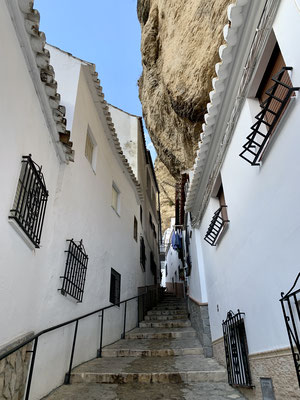
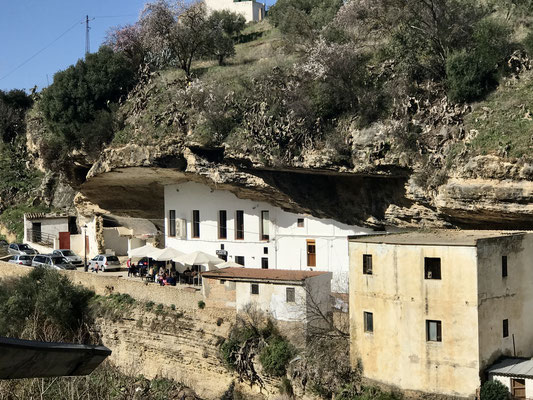
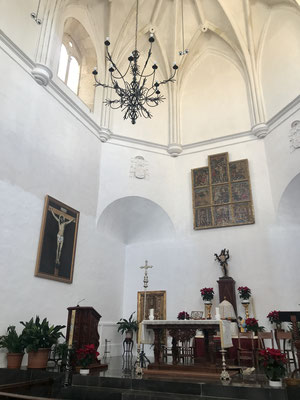
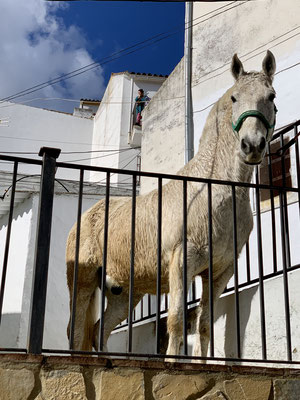
The most beautiful building in Setenil is now home to the tourist information office. This 16th century 'Casa Consistoral' used to be the town hall. Another highlight is the Iglesia de Nuestra Señora de la Encarnación church with Moorish and Gothic elements. In Andalusia, I always find it beautiful to see how Moors and Christians have built the same buildings over the course of time and how both architectural styles have been mixed. The best example of this for me is the Mezquita in Cordoba. A very special sight is Calle Herrería with a sign saying 'Bésame en este rincon', which means 'Kiss me on this corner'. Unfortunately, Marc doesn't speak much Spanish. The Virgen del Carmen chapel is also worth a visit.
We continue to drift through the picturesque white alleyways with their colorful flowers in clay pots and enjoy the wonderful atmosphere of this place.
Later, we continue on the Ruta de Pueblos Blancos towards Olvera. Again and again we have stunning views of the mountains. We see blossoming almond trees everywhere. In Torre Ahláquime, we could hardly believe our eyes when we saw a horse on a balcony. In some situations, you can't get your camera out fast enough. Here we have all the time in the world, because the horse can't leave.
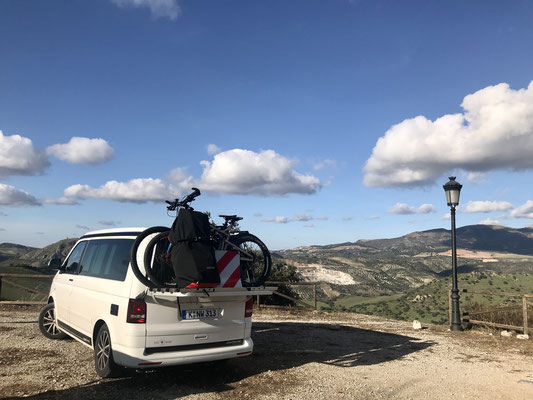
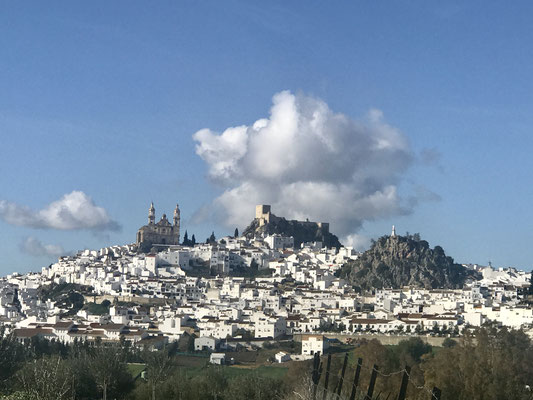
As it is very cold at night with only 3 degrees, we thankfully do without the outdoor shower and look for a shower with unlimited hot water. The Pueblo Blanco campsite not only offers this, but also scores with a sensational view of Olvera and the sunset on one side and a bizarre mountain world with herds of goats on the other. We feel very comfortable there, not least because of the silence. There are currently no 5 cars on the pitch. ACSI is accepted, € 18 for this pitch is a great price.

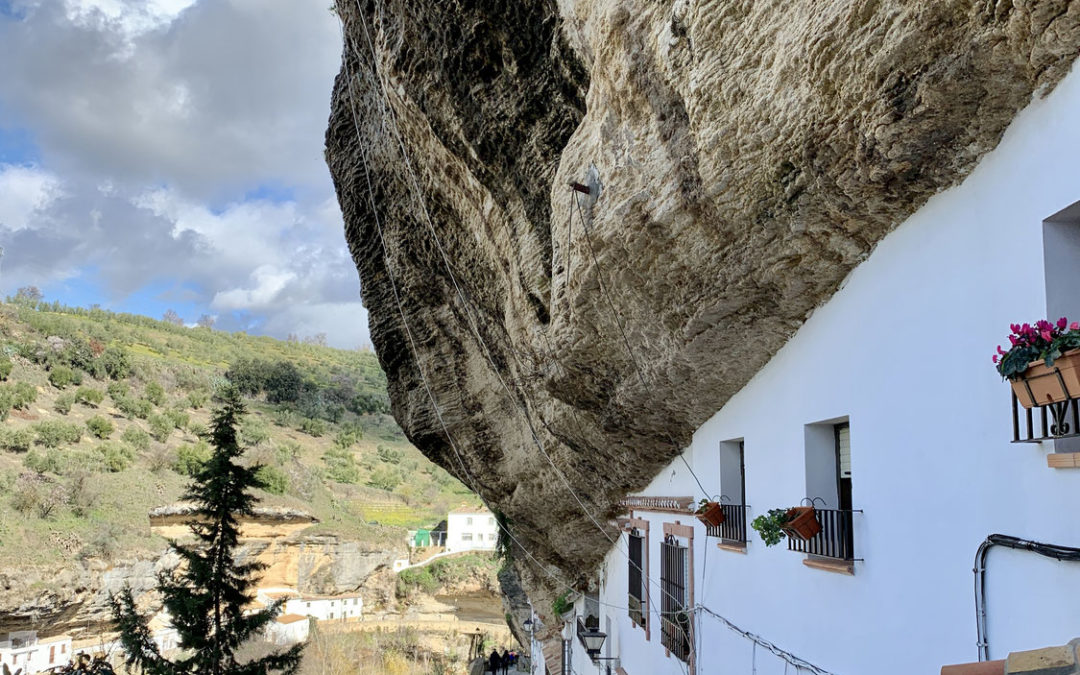
Recent Comments